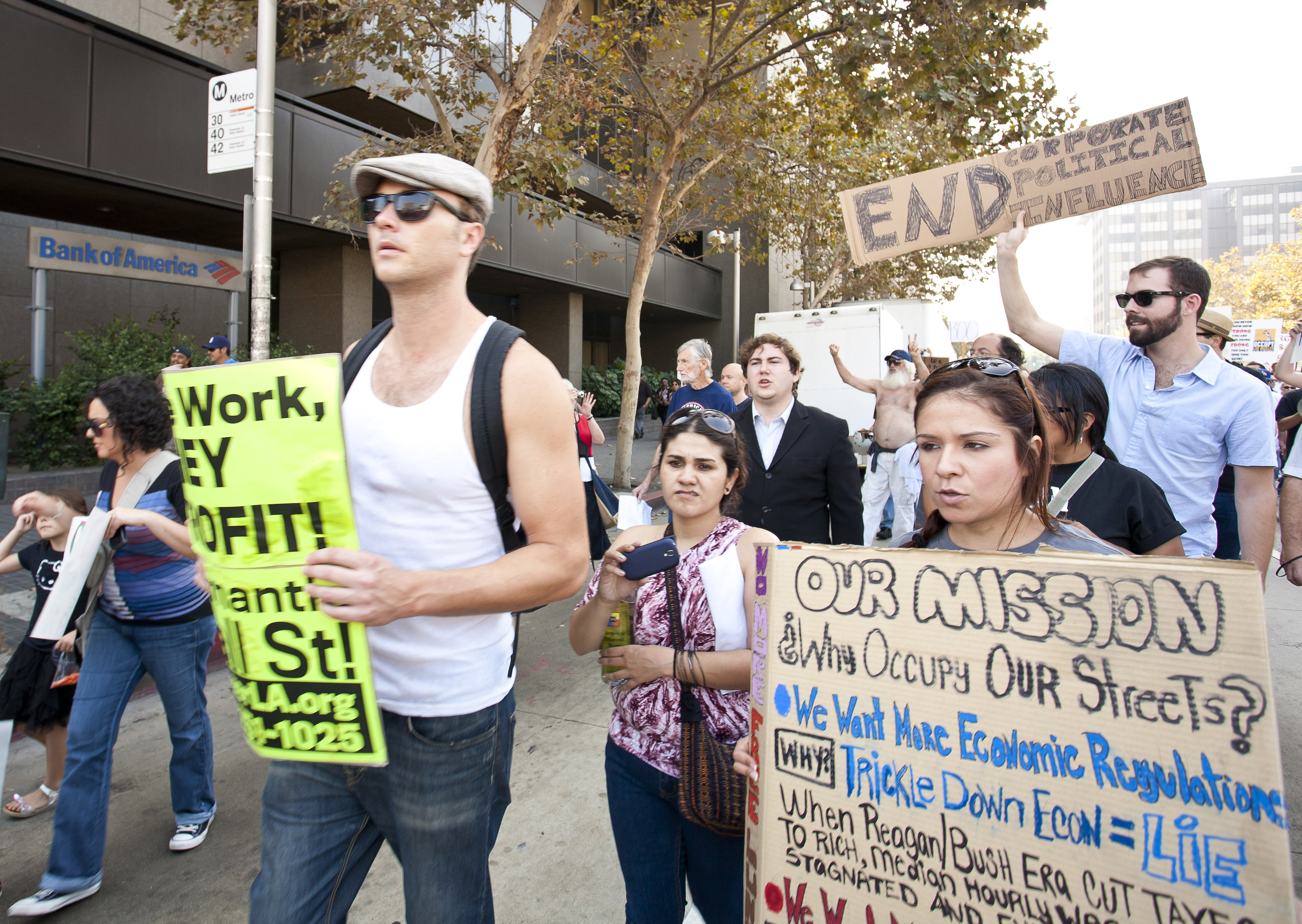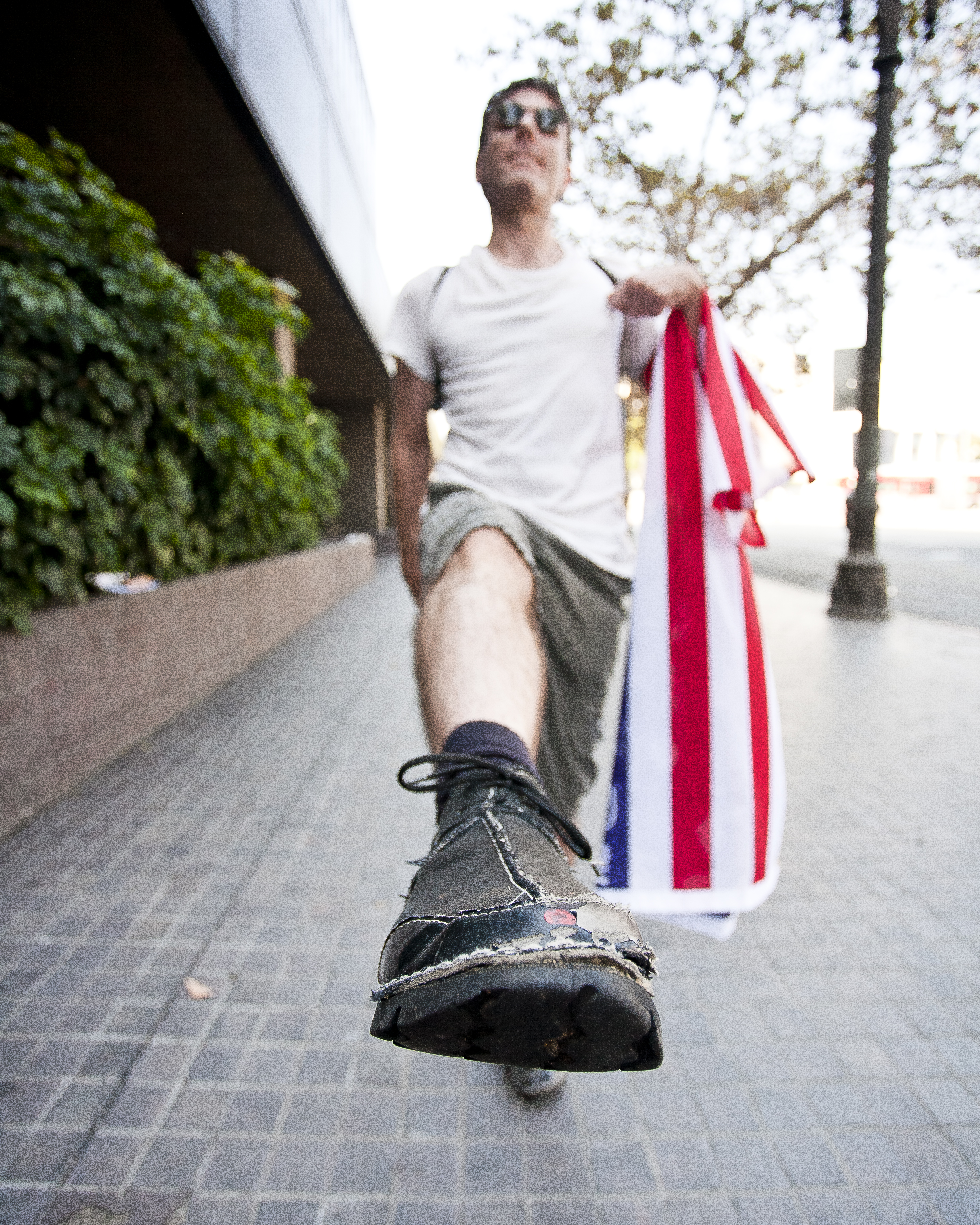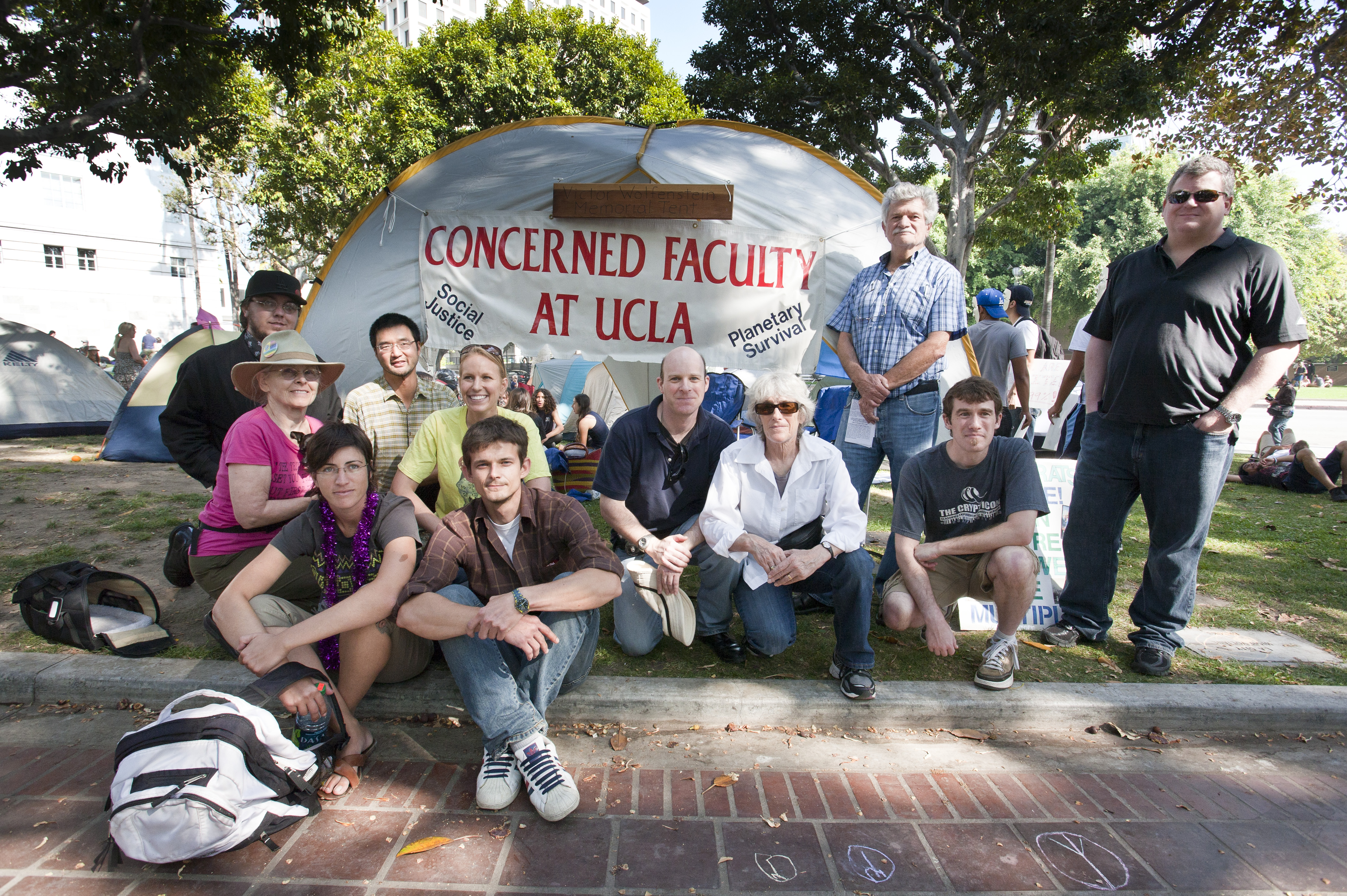
A group of protesters march in the streets in downtown Los Angeles as part of the Occupy L.A. movement.

Greg Burge, a multimedia engineer, marched in his pair of recycled Adbuster shoes to support the protest against corporate greed.

Political science professor Michael Chwe organized a memorial tent at the Occupy L.A. protest in honor of his recently deceased colleague.
Tents of every color lay scattered across the front lawn of Los Angeles City Hall on Saturday as thousands of people ““ including UCLA students and faculty ““ milled about in the late morning heat, preparing to march through downtown Los Angeles.
It was the second weekend of Occupy L.A., Los Angeles’ branch of a national movement protesting corporate greed. Organizers also called Saturday the “Occupy” movement’s International Day of Action.
In Los Angeles, the march went from Pershing Square through the Los Angeles financial district, ending with speeches and music performances on a stage erected next to City Hall.
On the City Hall lawn, one tent sported a banner bearing the words “Concerned Faculty at UCLA.” In front of the tent, several UCLA faculty members and students chatted with curious passersby about topics ranging from their memorial to protest politics.
UCLA political science professor Michael Chwe helped organize the small group to camp out during the day in support of the movement. The group came to observe, Chwe said, and to honor the memory of political science professor and social activist Victor Wolfenstein, who died in December.
Katherine King, a UCLA professor of comparative literature and classics, used to carry the “Concerned Faculty” banner with Wolfestein at past protests. She said the movement reminds her of the Tea Party, whose grass roots protests later formed the groundwork for a new political party.
“There’s the Tea Party on the right of the grass roots movement ““ on the left, we’re the “˜99 percenters,'” King said.
The “99 percent” slogan refers to the uneven distribution of wealth in the United States. The movement originated in New York in response to an advertisement in Adbusters magazine that read, “#OCCUPYWALLSTREET. September 17th. Bring tent.”
Andrew Newton, a former organizer for Occupy L.A. and a fourth-year international development student at UCLA, flew to New York Thursday afternoon to participate in the Occupy Wall Street protests, staged in New York’s financial district.
Early Saturday morning, Newton stood elbow-to-elbow with about 6,000 other protesters in Zuccotti Park, facing police officers positioned behind barricades. The city’s mayor sent police to evacuate the park, citing sanitary and safety concerns posed by the occupation.
While at Occupy Wall Street, Newton said he noticed differences between the Wall Street and Los Angeles protests. Newton said the Los Angeles protesters were more willing to collaborate with city police, while Wall Street protesters emphasized civil disobedience without official permission.
“Los Angeles (protesters) don’t really recognize that getting permits and police permission is not civil disobedience,” Newton said. “You don’t try and beg for permits, you just do it.”
Protesters in Los Angeles have the backing of local government ““ on Wednesday, the Los Angeles City Council passed a resolution to officially support the Occupy L.A. movement.
Location plays a large role in the success and weight of the protests, however, said Stanford professor Gabriel Wolfstein, the son of Victor Wolfenstein and a member of Chwe’s group in Los Angeles.
Wall Street provides an important location both physically and ideologically, a focal point that Los Angeles lacks, Wolfenstein said.
“The Los Angeles sprawl works against the “˜occupy’ idea; to inhabit the space of power,” he said.
The clarity of the “Occupy” movement’s agenda has been a source of confusion for many observers, Wolfenstein said. Many protesters carried personal struggles to the event. For others, the potential political significance of the “Occupy” protests drew them to City Hall.
Newton and his fellow protesters cheered as they watched the police line dissipate on Saturday morning. He said they began forming cleaning crews. With brooms and mops, they cleaned the park, and were ready for the next day.
With contributing reports from Shalev Netanel, Bruin contributor.
